“Sevastopol is a weak fortress. Take a march, with a short blow "
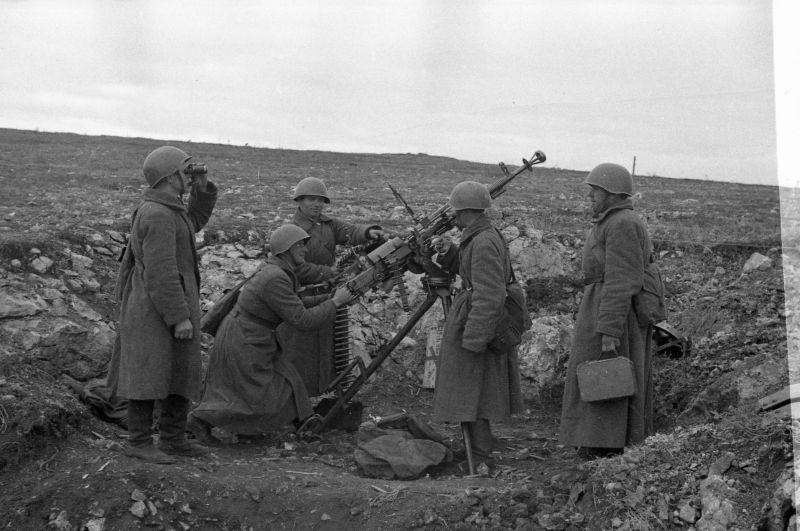
The anti-aircraft crew of the DShK Afanasyev machine gun from the 161st Infantry Regiment of the 95th Infantry Division of the Primorsky Army is firing at the enemy near Sevastopol. November 1941
Sevastopol fortress
Sevastopol is the main base of the Russian Black Sea fleet, before the war had a defense system that covered it well from sea and air.
At the mouth of the Belbek River and in the area of Cape Chersonesos, there were 2 coastal armored turret batteries (BB) - No. 30 and 35, each having 4 guns of 305-mm caliber. These were real reinforced concrete giants, the towers turned 360 degrees, conducting a circular shelling, had many underground rooms and passages, emergency exits to the sea.
The batteries were built to protect Sevastopol from the sea, but out of necessity became centers of defense from land. The 35th battery became a symbol of the heroic defense of Sevastopol. There were also coastal and mobile batteries armed with 102-, 120-, 152- and 203-mm guns.
In total, coastal artillery consisted of about 50 guns.
On the basis of the section of the unfinished battleship, in August 1941, the floating anti-aircraft battery No. 3 "Don't touch me" was commissioned.
Initially, the battery was equipped with two 130-mm naval guns, four 76-mm and three 37-mm anti-aircraft guns, three 12,7-mm DShK anti-aircraft machine guns and two searchlights with surveillance and communication equipment. Later, the 130mm cannons were removed and transported to land, and the anti-aircraft armament was reinforced with a quadruple 7,62mm machine gun.
The battery team initially consisted of 130 people under the command of Senior Lieutenant S. Ya. Moshensky. At first, the floating battery covered the ships, on November 11 it was towed to the Cossack Bay. She began to defend the airfield at Cape Chersonesos from the air.
The Germans nicknamed the floating battery "Death Square".
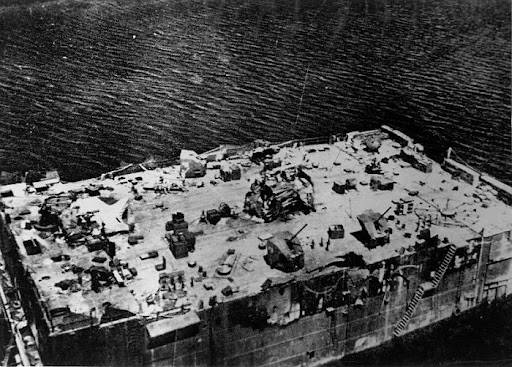
Don't touch me battery in original armament. 130mm guns visible in the turrets
The city was poorly defended from land.
That is, the lessons of the Crimean War were forgotten. Even before the start of the war, it was planned to begin the construction of land defensive positions, but they did not start.
Their construction will begin only at the beginning of July 1941, when the enemy was already rapidly advancing across our land. By the time the enemy broke through to Crimea (Battle of Crimea) there was a construction of three land defensive lines - forward, main and rear.
Due to improper planning of work, the main and rear lines were best prepared, the front line did not have time to complete. In addition, the forward line was only 15-16 km away from the city and did not occupy the command heights that were in front of it. Having captured these positions, the enemy could fire artillery fire on the city, bay and airports.
The front line was up to 43 km long and 1,5–2,5 km deep.
There were several long-term defensive positions, which consisted of separate machine-gun and artillery pillboxes and bunkers. The defensive structures consisted of four strong points: Chorgunsky, Cherkez-Kermensky, Duvankoysky and Aranchisky.
45-mm and 130-mm naval guns were delivered in the tank-hazardous areas. In some areas, there were minefields and obstacles. The main border was located at a distance of 9–12 km from the city, the depth was 1,5–3 km. The strongest defense, including machine-gun and artillery pillboxes and pillboxes, was in the Inkerman - Lyubimovka sector. The pillboxes and bunkers were armed with eight 100-mm guns, fourteen 76-mm guns, fifteen 75-mm guns, twenty-five 45-mm guns.
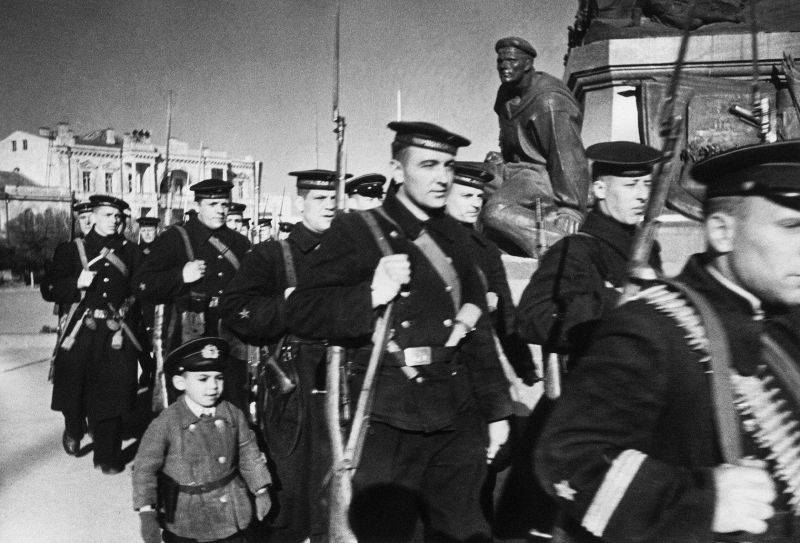
Red Navy men are at the monument to V. I. Lenin on Nakhimov Square in Sevastopol. Shot from the documentary "Defense of Sevastopol"
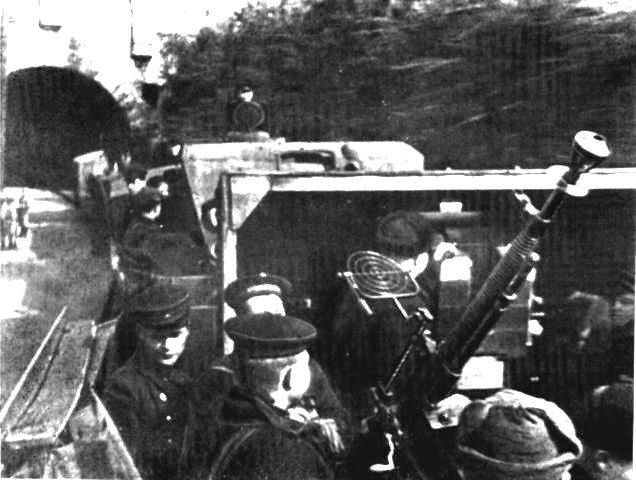
Armored train "Zheleznyakov" (the Germans nicknamed him "Green Ghost")
Garrison forces
On October 29, 1941, a state of siege was introduced in Sevastopol.
The garrison of the city before the arrival of the Maritime Army units consisted of two brigades (one incomplete), two marines regiments, several separate rifle battalions, a reserve artillery regiment, several batteries and air defense units. In total, about 21 thousand people (including the Black Sea Fleet Air Force - about 1 people, more than 100 aircraft and the Black Sea Fleet Air Defense - about 4 thousand people, more than 70 guns), about 150 guns and 70 mortars and 5 armored trains.
The city has made repairs weapons, the release of ammunition and produced 50- and 82-mm mortars. They used literally all the raw materials that were available and could be found. Fortunately, there was enough iron in Sevastopol.
The Sevastopol Marine Plant No. 201, the repair plant, the Molot artel, railway workshops and others worked for the needs of defense. Special Combine No. 1 was launched in the Inkerman adits. they made shells, forged armored shields, cast stoves for soldiers, etc. They also sewed underwear, uniforms and shoes. Hospitals, schools, nurseries and a kindergarten, a bakery worked underground.
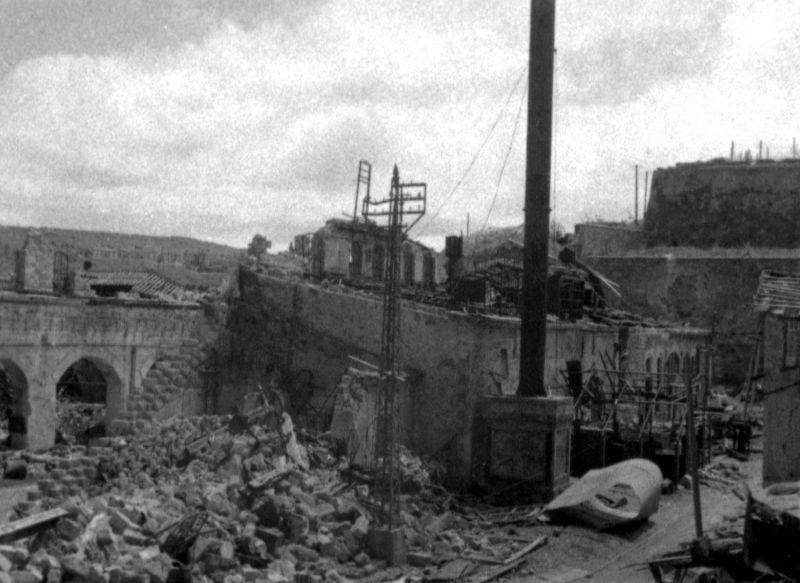
Workshops of the Ordzhonikidze Sevastopol Marine Plant (SMZ) suffered during the fighting (probably the result of the bombing). 1941 g.
The main forces of the fleet were located in Sevastopol - 1 battleship, 5 cruisers, 11 destroyers, 16 submarines, etc.
But the ships were under the blows of the German aviation and artillery, so they were relocated from October 31 to November 1 to the ports of the Caucasus. In Sevastopol, only a few old ships were left for fire support of the garrison, mainly patrol boats and minesweepers. Large ships now escorted convoys that delivered reinforcements, weapons, ammunition, equipment, provisions and evacuated the wounded.
The headquarters gave the order:
The task of the Sevastopol garrison was to prevent the enemy from seizing the city before the approach of the main forces of the Primorsky army, which withdrew in a roundabout way through Alushta and Yalta, along the Primorskoe highway.
On November 4, 1941, the Sevastopol Defense Region (SOR) was created.
The SOR included: the troops of the Primorsky Army, ships and aircraft of the Black Sea Fleet, the Sevastopol naval base. SOR was headed by Major General Ivan Petrov, since November 19 - Vice Admiral Philip Oktyabrsky.
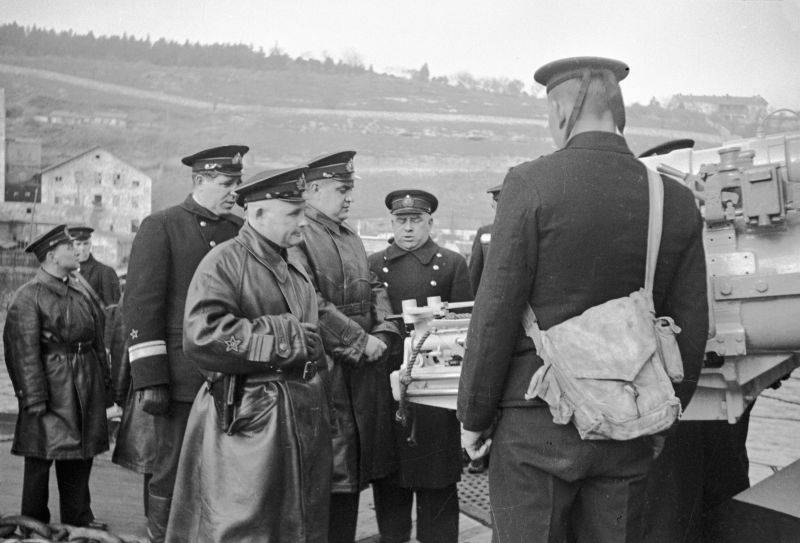
Commander of the Black Sea Fleet Vice Admiral FS Oktyabrsky (in the foreground), member of the Military Council, Divisional Commissioner N.M. Kulakov and Head of the Political Directorate of the Black Sea Fleet Divisional Commissioner P.T.Bondarenko at the ship's gun in Sevastopol
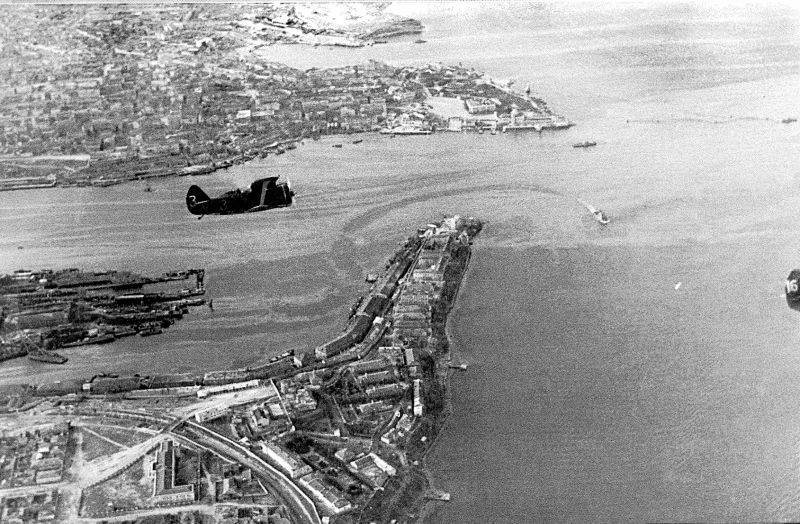
Soviet fighters I-153 "Chaika" of the 32nd Fighter Aviation Regiment of the Black Sea Fleet Air Force over Sevastopol. Panorama of the city. In the foreground is the Naval Hospital on Cape Pavlovsky, on the left is the water area of the Korabelnaya Bay and BTShch-27 (base minesweeper) at the outfitting wall, next to them are launching devices and a slipway with hulls of unfinished minesweepers. Above - the central part of the city and Artillery Bay. At the berth of the Seaport there is a passenger motor ship "Crimea". 1941 g.
"Take the march"
The German 11th Army on October 28, 1941 broke the resistance of the Soviet 51st and Primorskaya armies and developed an offensive in the Crimea.
The 51st Army retreated to the Kerch Peninsula, was unable to gain a foothold and, under pressure from the enemy, was evacuated to Taman. The seaside army withdrew to Sevastopol. However, the Germans saddled the steppe roads from Simferopol to Sevastopol, and the Primorye had to go through the mountains to Alushta and Yalta, and from there - along the Primorskoe highway to Sevastopol.
Therefore, German troops reached the Black Sea Fleet base before the units of the Primorsky Army.
The commander of the 11th Army, General Erich von Manstein, gave the order:
In general, he was right, the city was weakly defended from land. The construction of the defensive lines was not completed. The 20th garrison could not hold back the onslaught of the entire German army for a long time.
The 11th Army had an advantage in manpower, technology and aviation, as well as in general organization, communications and training of command personnel.
At the beginning of the siege, the 11th army of the city numbered about 60 thousand people, almost 900 guns and 150 armored vehicles. From the air, the army was supported by the 4th Air Corps - over 200 vehicles.
First hit
The Nazis sought to take the city on the move, until the Primorsky army approached there, which could significantly increase the combat potential of the Sevastopol garrison.
The 54th Army Corps of the 11th Army advanced along the shortest route along the Simferopol - Sevastopol highway.
The beginning of the Sevastopol defense is considered to be the battle between October 30 and November 2, 1941, battery No. 54 with the enemy's forward detachments near the village of Nikolaevka, Simferopol region.
On November 5, the main forces of the 54th corps approached, and immediately went on the attack. In the central sector of the forward defensive zone, fierce fighting broke out (mainly at the Cherkez-Kermen stronghold). For four days, the Soviet marines repelled the continuous attacks of the enemy, who were supported by large forces of the Luftwaffe.
The Nazis were able to break through the front line of defense in the areas of the villages of Hajikoy, Duvanka, Cherkez-Kermen and Mekenzia. However, despite the fourfold superiority in forces, the Nazis failed to break the defense of the Sevastopol.
On November 9, the Germans took a break to bring up new forces and regroup the troops.
On November 9-10, the Germans completely surrounded the city from land.
Thus, the marines, coastal batteries and individual units (training, artillery and air defense) repulsed the first attack, did not allow the enemy to take Sevastopol on the move.
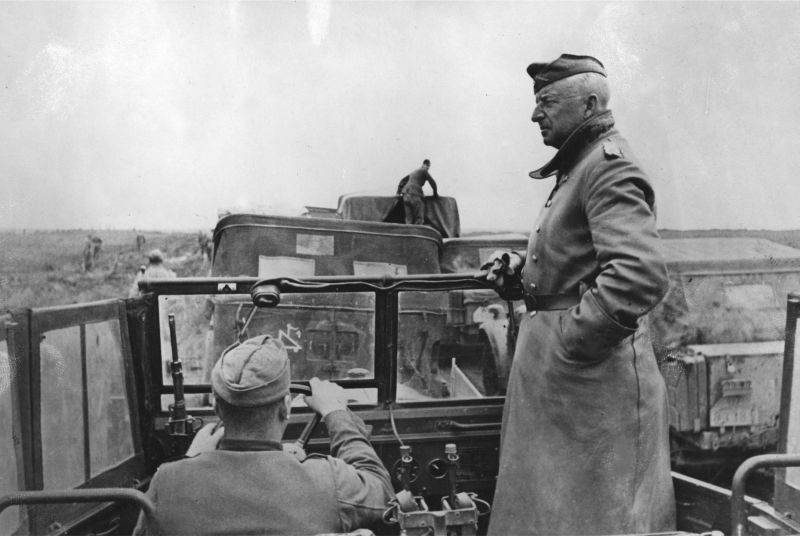
General of the infantry Erich von Manstein on the Crimean front in his staff car
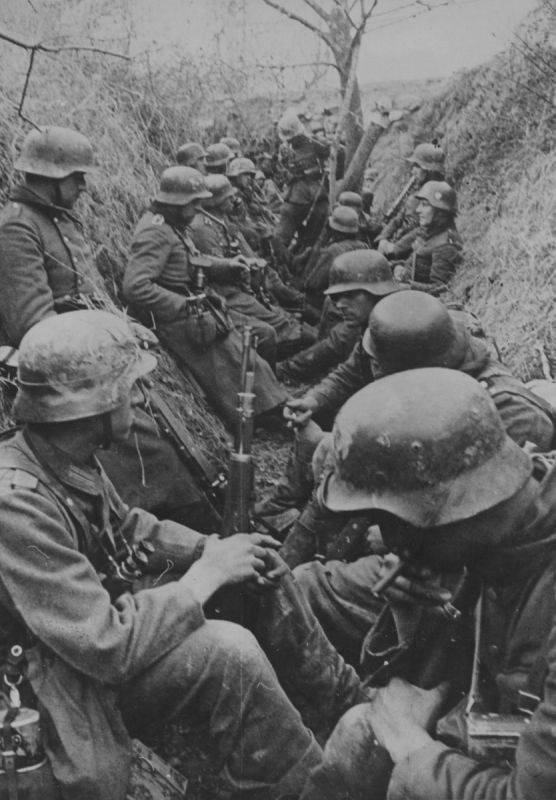
German soldiers are resting in a gully in the vicinity of Sevastopol. The first assault on Sevastopol
Meanwhile, the troops of the Primorsky Army, fighting with the enemy, who was trying to cut the Yalta-Sevastopol road, on November 9, the main forces (some units made their way later) went to the Sevastopol region and deployed to defend the city.
The army consisted of the 25th, 95th, 172nd and 421st rifle, 2nd, 40th and 42nd cavalry divisions (the 40th and 42nd cavalry divisions were previously part of the 51st army), 81st separate tank battalion, 265th corps artillery regiment and a number of other units. Later, the remnants of the 184th Infantry Division (border guards) made their way into the city.
In total, the army, along with the rear, was 31,5 thousand people, more than 110 guns, over 220 mortars and 10 light T-26 tanks.
The divisions of the Primorsky Army, which previously fought heavy battles in the north of the peninsula and during the retreat, suffered heavy losses in manpower, weapons and materiel. Part of the troops scattered across the peninsula, became partisans, and were taken prisoner.
So, in the 2nd cavalry division, 320 people remained, and no guns survived. The remnants of the 40th and 42nd Cavalry Divisions were left without horses.
Units of the 421st Infantry Division, which covered the army's retreat from Simferopol to Alushta, and then, together with the 184th Infantry and 48th Cavalry Divisions, defended the passes and fought for Yalta and Alushta, suffered heavy losses. A little more than 500 people remained in the division. Therefore, the 421st division was disbanded, used to replenish the 7th Marine Brigade and the 172nd Division.
The 2nd Cavalry Division, due to the almost complete loss of the equestrian structure, was reorganized into the 2nd Infantry Division.
The 42nd Cavalry Division was disbanded, the 40th Cavalry Division was replenished with its personnel and weapons.
On November 11, the SOR was divided into four sectors, each had its own reserve, there were also general and artillery reserves. On average, counting guns and mortars of all calibers, there were 1 barrels per 9 km of the front.
Artillery control within the sectors was centralized. The coastal artillery, through the chief of the coastal defense artillery, was operatively subordinate to the chief of the artillery of the defense area. The naval artillery was subordinate to the command of the fleet, but carried out fire missions in the interests of the ground forces at the direction and requests of the chief of artillery of the defensive area. This ensured the massing of artillery fire in the main directions.
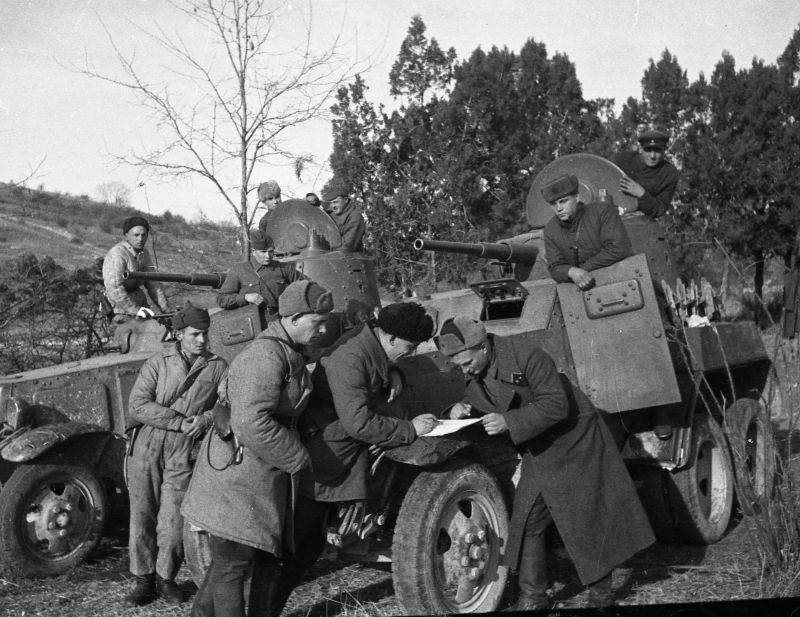
The military commissar of one of the companies of the 80th reconnaissance battalion of the 25th rifle division of the Primorsky army, senior political instructor A.M. in their original positions. November 80
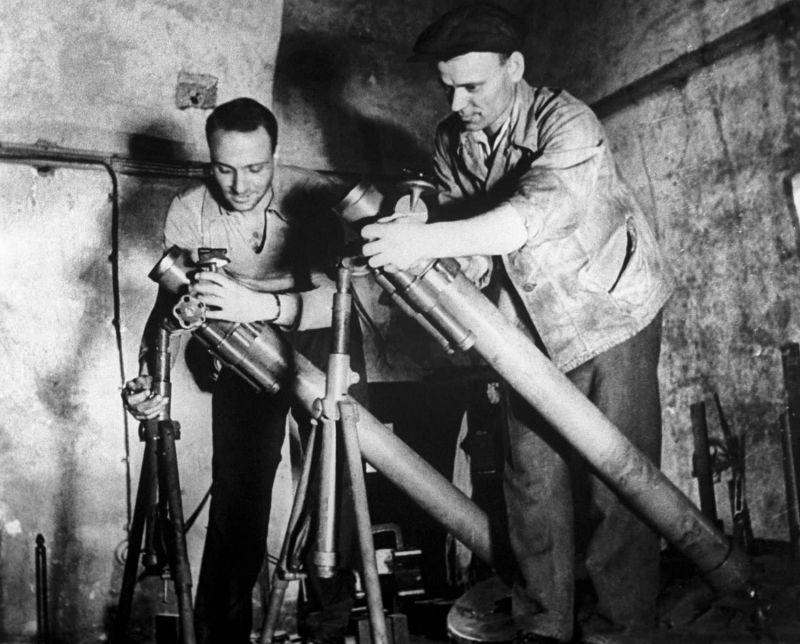
Workers assembling 82-mm mortars of the 1937 model (BM-37) in the workshop of the Sevastopol underground military special combine No. 1
Assault
The German command was in a hurry to take the city and free the forces of the 11th Army for operations in other directions.
The Germans pulled up the 30th corps to Sevastopol, regrouped their forces and on November 11 began a decisive assault.
The German 72nd Infantry Division, reinforced with tanks, advanced along the Yalta-Sevastopol highway. The 50th Infantry Division and a motorized detachment attacked a sector in the direction of Cherkez-Kermen - Kara-Koba valley. The offensive was actively supported by the German Air Force, which struck at the defenses of our troops and the city. Also, German aircraft operated against the Black Sea Fleet and its communications. It was relatively calm in the northern and northeastern sections. The Germans carried out reconnaissance in force, fired at our positions and carried out engineering work.
The 72nd German division launched an offensive on the positions of our 40th cavalry division on November 9th. The 40th division was at the forefront in the Varnutka area. Under pressure from superior enemy forces, the 40th division withdrew to the line of the forward defensive line. The enemy took the villages of Varnutka and Kuchuk-Muskomya.
On the 13th, the Germans renewed their attacks and wedged into the defenses of the 1st sector. On the 14th, the reserves of the 1st and 2nd sectors counterattacked and eliminated the small success of the enemy.
On November 15, having entered into battle the second echelon of the 72nd division and a group of tanks, the Germans again pushed our troops and reached Balaklava, in the area of height 386,6. The enemy broke through the forward and main lines of defense.
On November 16, the Soviet command brought a rifle regiment from the general reserve into battle, and the enemy's further advance was stopped.
In the morning of November 18, the Germans attacked Kamary, by the evening our troops left the settlement.
On the 21st, Soviet troops launched a counterattack and recaptured Kamara.
On this, the fighting on the right flank was completed. Soviet troops stopped the enemy on the Balaklava-Kamara line.
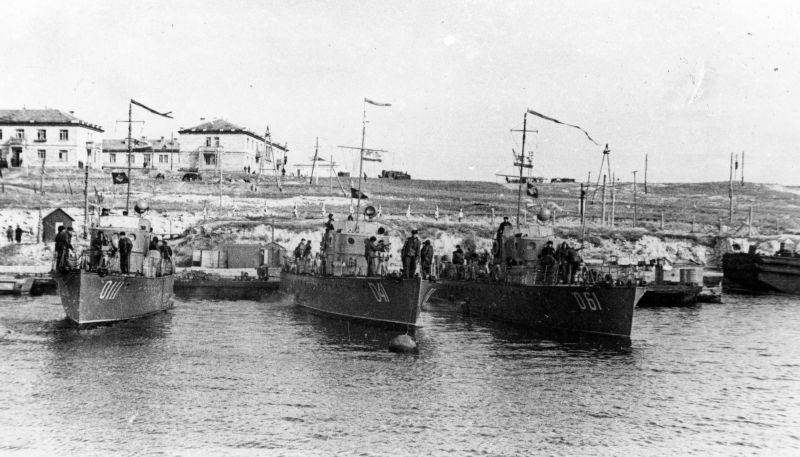
Boats of the MO-4 project in the Streletskaya Bay of Sevastopol. October-November 1941
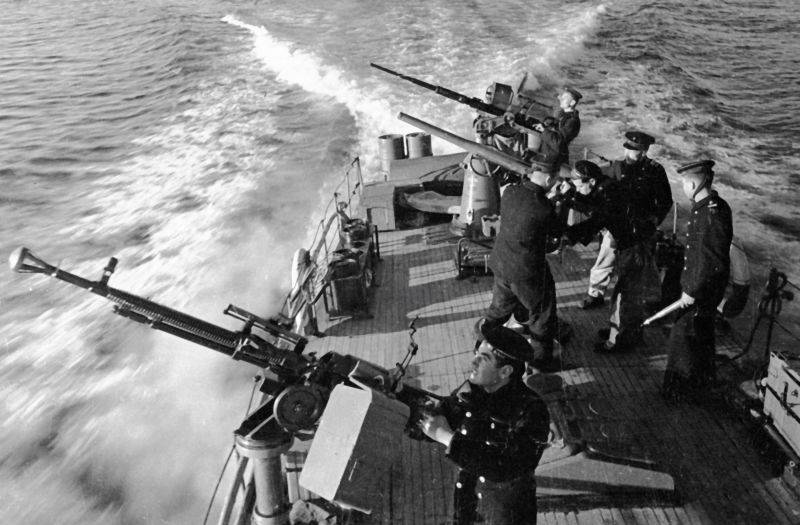
The sailors of the patrol boat of the project MO-4 of the Black Sea Fleet are preparing to repel an air attack. In the foreground there is a 12,7-mm large-caliber anti-aircraft machine gun DShK, in the background there is a 20-mm automatic cannon "Oerlikon"
The troops of the 2nd and 3rd sectors on November 13-18 repulsed the attacks of the enemy's 50th infantry division, which was advancing from the Cherkez-Kermen area.
For six days of stubborn battles, the Nazis managed to drive a wedge 1,5 km, capture heights 269 and 293,3, but they could not go further.
Our troops counterattacked quite successfully. The enemy was forced to stop.
In the center of the 2nd sector, the Germans managed to capture the height 287,4 on the outermost sector of the forward defensive line.
In other sectors of the front, the Nazis also did not achieve success. Thus, the troops of the 4th sector repulsed the attacks of the 22nd Infantry Division in the Efendikoy area.
Thus, the first assault on the enemy was repelled.
The March failed.
Sevastopol resisted.
The Nazis were able to achieve only local successes, the most significant - in the southeast. For ten days of fierce fighting, German divisions in some areas wedged into our defenses from 1 to 4 km. Having suffered heavy losses and met a strong defense, the German command on November 21 stopped the offensive on Sevastopol until mid-December.
The troops of the 11th Army were shackled by the siege of Sevastopol and could not attack the Caucasus through the Kerch Strait or provide assistance to the 1st Panzer Army in the Rostov direction.
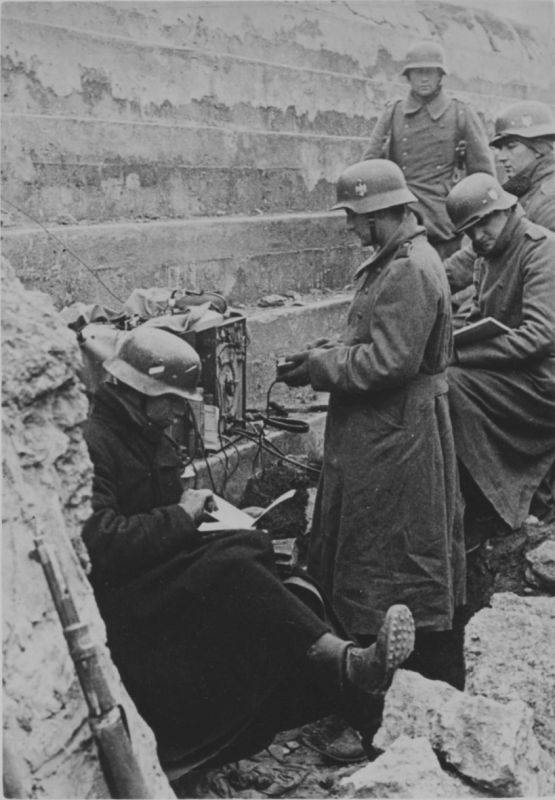
German soldiers at the communication point at the captured Soviet bunker near Sevastopol
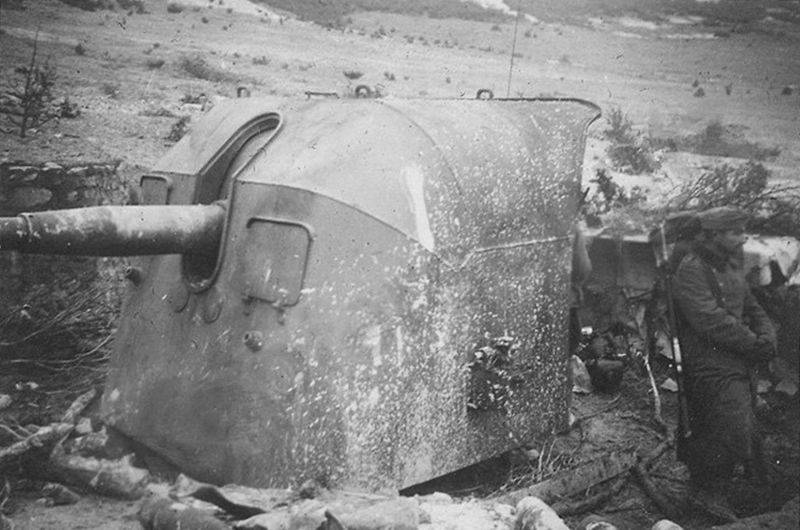
German soldier at the captured 100-mm cannon B-24BM bunker number 63 Cherkez-Kermen stronghold
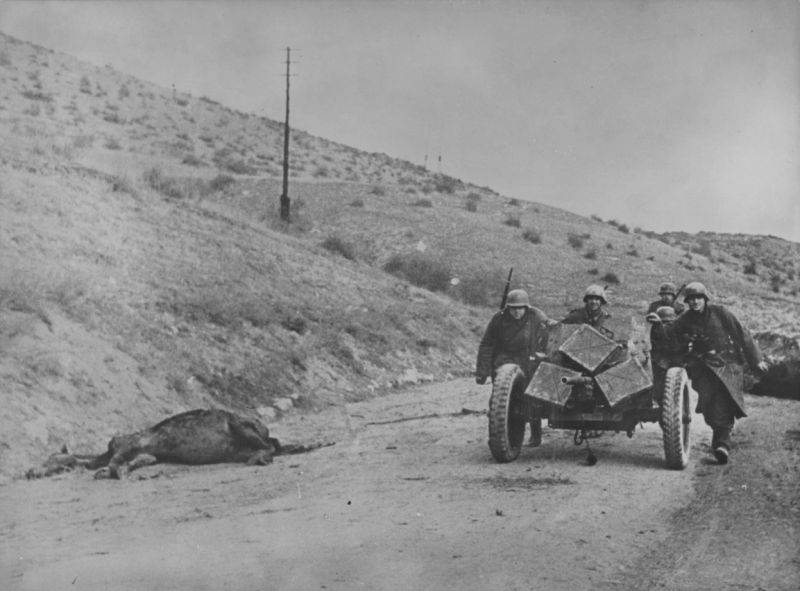
German soldiers roll a 37 mm PaK 35/36 anti-tank gun along the road near Sevastopol
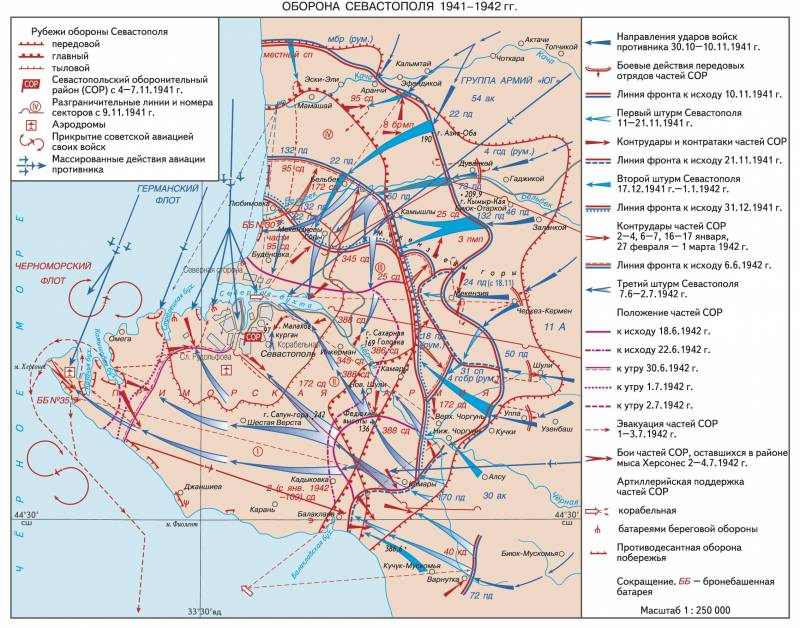
Information